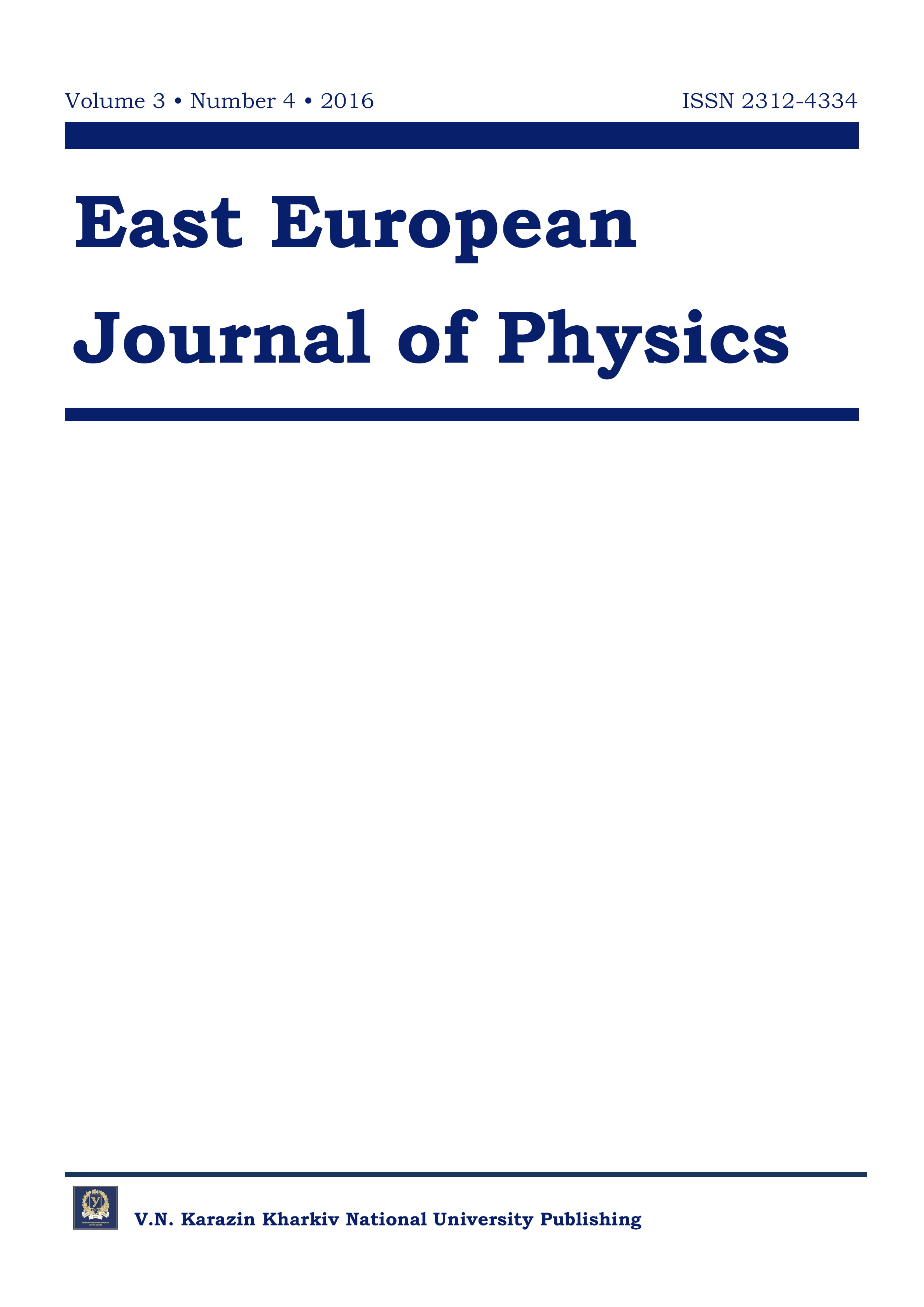Plasma Wall Transition and Effects of Geometry in Presheath
Abstract
When plasma interacts with the wall of a conductor, electrons due to high mobility reach the wall first and develop negative potential on the wall and very near to the wall plasma is divided into sheath and presheath regions. The quasi-neutral plasma is shielded from the wall by a space charge sheath of the positive ions of the order of few electrons Debye’s lengths (λD) . At the sheath edge quasi neutrality breaks down from presheath side. In asymptotic limit ε=λD/L → 0 varying area of geometry affects the structure of the presheath scale. In addition to geometry, collisions and ionization also affects the presheath structure. But the sheath region is universal and is independent of either of geometry, ionization rate and collision frequency. The region which play the role of a link between these two regions has characteristics of both regions and is known as intermediate region. Even in the absence of ionization source and collision expanding area of geometry can accelerates the ions towards the wall. The characteristic length of the geometric presheath depends on radius of curvature c R = A/A′ , where “A” is the area of geometry and “A′= dA/dz”. If either of ionization or collisions is present along with the expanding area of geometry then dominant factor for the acceleration of ions in the presheath region is not the expanding area of geometry.
Downloads
References
Riemann K.U. The Bohm criterion and sheath formation // J. Phys. D: Appl. Phys. – 1991. – Vol. 24. – P.493.
Langmuir I. Oscillation in ionized gases // Proc. Natl. Acad. Sci. – 1928. – Vol.14. – P.626-627.
Riemann K.U. Consistent analysis of a weakly ionized plasma and its boundary layer // phys. Fluids B. – 1993. – Vol.3. – P.456.
Caruso A., Cavaliere A. The structure of the collisionless plasma-sheath transition // Nuovo Cimento. – 1962. – Vol.26. – P.1389.
Riemann K.U. The plasma sheath matching problem // J. Tech. Phys. – 2005. – Vol. 41. – No.1- P.89-90.
Lieberman M A and Lichtenberg A J. Principles of Plasma Discharges and Materials Processing. Ch.5.-New York: Wiley, 1994. – P.123-125.
Riemann K.U. Tsendin L. Unipolar ion sheath // J. Appl. Phys. – 2001. – Vol.90. – No.11. – P.5487-5490.
Valentini H.B. Two-Fluid Theory of Presheath and Space Charge Sheath in Low Pressure Plasmas // Contributions to Plasma Physics. – 1991. – Vol. 31. – P.221-229.
Tonks L. and Langmiur I. A General Theory of the Plasma of an Arc // Phys. Review Letters. – 1929. – Vol. 34. – P.876.
Riemann K.U., Meyer P. Bohm criterion for the collisional sheath - comment // Physics of plasmas. – 1996. – Vol. 3. – No.12. – P.4751-4753.
Escobar D., Ahedo E. Low frequency azimuthal stability of the ionization region of the hall thruster discharge // Physics of Plasmas. – 2014. – Vol. 21. – No.4. – P.043505.
Riemann K.U. Theory of plasma sheath transition // J. Tech. Phys. – 2000. – Vol. 41. – No.1- P.89-121.
Riemann K.U. The influence of collisions on the plasma sheath transition // Physics of plasmas. – 1997. – Vol.4. – No.11. – P.4158-4166.
Riemann K.U. Theory of the plasma-sheath transition in an oblique magnetic-field // Contributions to Plasma Physics. – 1994. – Vol. 34. – No.2. – P.127-132.
Martinez M., Ahedo E. Magnetic mirror effects on a collisionless plasma in a convergent geometry // Physics of Plasmas. – 2011. – Vol.18. – P.033509.
Lieberman M.A., Lichtenberg A.J. Principles of Plasma Discharges and Materials Processing. Ch.3. – New York: Wiley, 1994. – 180 p.
Ahedo E., Escobar D. Two-region model for positive and negative plasma sheaths and its application to Hall thruster metallic anodes // Physics of Plasmas. – 2008. – Vol. 15. – P.23-28.
Authors who publish with this journal agree to the following terms:
- Authors retain copyright and grant the journal right of first publication with the work simultaneously licensed under a Creative Commons Attribution License that allows others to share the work with an acknowledgment of the work's authorship and initial publication in this journal.
- Authors are able to enter into separate, additional contractual arrangements for the non-exclusive distribution of the journal's published version of the work (e.g., post it to an institutional repository or publish it in a book), with an acknowledgment of its initial publication in this journal.
- Authors are permitted and encouraged to post their work online (e.g., in institutional repositories or on their website) prior to and during the submission process, as it can lead to productive exchanges, as well as earlier and greater citation of published work (See The Effect of Open Access).








